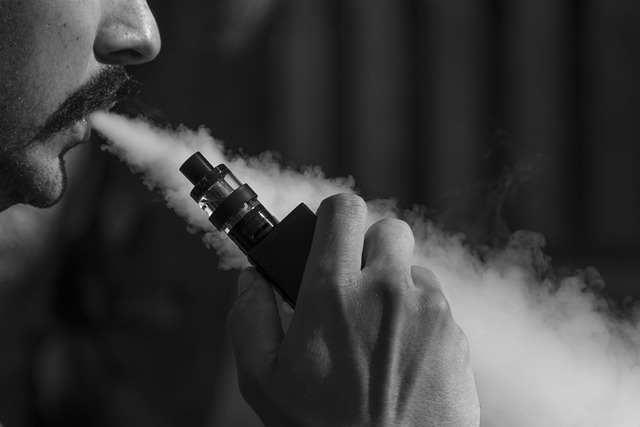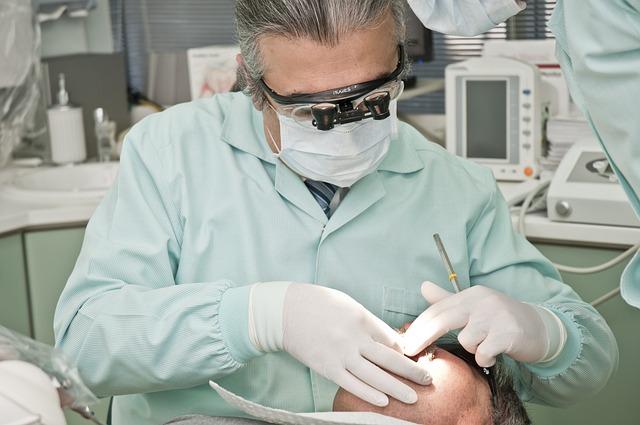Smoking with Braces: A Complete Guide for Smokers
Smoking with braces can be a tricky territory to navigate, as the combination of these two habits may pose unique challenges when it comes to oral health. Whether you’re a long-time smoker or someone who recently got braces, it’s crucial to understand the potential risks and precautions necessary to maintain a healthy smile. In this comprehensive guide, we will delve into the ins and outs of smoking with braces, equipping you with the knowledge you need to make informed decisions and preserve your dental well-being. From debunking common myths to offering practical tips and alternatives, let’s embark on a journey that will empower you to take control of your oral health while still enjoying your smoking routine.
1. Understanding the Impact of Smoking on Braces: What You Need to Know
Smoking can have a significant impact on the effectiveness and longevity of braces. Here are some key points to consider:
1. Staining: Smoking can cause severe staining on the brackets and wires of braces, making them more noticeable and difficult to clean. This can affect the overall appearance of your smile and may require additional dental treatments to address the discoloration.
2. Delayed Healing: Smoking hinders the body’s natural ability to heal, which can lengthen the time needed for braces adjustments and overall treatment. The nicotine in cigarettes reduces blood flow, depriving the gums and bones of essential nutrients and oxygen. This can lead to slower tooth movement and potential complications during the orthodontic process.
3. Increased Risk of Gum Disease: Smoking is known to increase the risk of gum disease. When combined with the presence of braces, the risk becomes even higher. Gum disease can cause gum recession, bone loss, and eventually, tooth loss. It is crucial to maintain excellent oral hygiene habits and regularly visit your orthodontist for check-ups.
4. Weakening of Tooth Enamel: Smoking weakens tooth enamel, making it more susceptible to decay and cavities. Braces already present challenges when it comes to oral hygiene, and smoking further exacerbates these issues. Regular brushing, flossing, and using mouthwash are essential to minimize the risk of tooth decay.

2. Taking Care of Your Braces While Smoking: Essential Tips and Tricks
When you have braces, it’s important to take extra care while smoking to ensure the best possible outcome for your treatment. Here are some essential tips and tricks to keep in mind:
- Brush and floss diligently: Smoking can increase the risk of plaque buildup and gum disease, so it’s crucial to maintain good oral hygiene. Brush your teeth thoroughly after every smoking session, making sure to clean around your braces and wires. Use a soft-bristled toothbrush and fluoride toothpaste to gently remove any residual smoke particles or stains. Flossing should also be done regularly to reach areas that your toothbrush can’t.
- Choose smoke-free alternatives: Quitting smoking altogether is the best choice for your overall health and the success of your braces treatment. However, if you’re unable to quit, consider using smokeless tobacco alternatives like nicotine gum or patches. These options eliminate the negative effects of smoking on your braces, reducing the risk of staining or damaging the brackets and wires.
Moreover, it’s crucial to attend all your orthodontic appointments to ensure your braces are properly adjusted and maintained. Remember, taking care of your braces while smoking can help you achieve the desired results faster and maintain a healthy smile in the long run.

3. Minimizing the Risks: How to Smoke Responsibly with Braces
When you have braces, smoking can pose additional risks to your oral health. However, by taking a few precautions and being mindful of your habits, you can still enjoy a smoke responsibly while minimizing potential damage to your braces. Here are some tips to help you navigate smoking with braces:
Avoid tobacco products: Tobacco, whether in the form of cigarettes, cigars, or pipes, can stain your teeth and cause bad breath. It can also increase your risk of gum disease and tooth decay, which can be exacerbated when you have braces. Consider quitting smoking altogether or exploring alternative options like nicotine patches or gum to satisfy your cravings.
Practice good oral hygiene: Maintaining a strict oral hygiene routine is crucial when you have braces and smoke. Brush your teeth after every smoking session, being sure to clean both the front and back of your teeth and brackets. Use a fluoride toothpaste and a soft-bristled toothbrush to gently remove any plaque or debris. Additionally, flossing at least once a day will help remove any particles that may have become lodged between your teeth and braces. Regular dental check-ups and cleanings are essential to monitor your oral health and address any concerns that may arise.

4. Navigating the Challenges: Dealing with Stains and Discoloration from Smoking with Braces
When you have braces and smoke, you may encounter stains and discoloration on your teeth. While it can be challenging to deal with, there are effective ways to navigate these issues. Here are some tips to help you keep your teeth clean and minimize the appearance of stains:
- Brush thoroughly: Regular and thorough brushing is crucial to remove surface stains caused by smoking. Use a soft-bristle toothbrush and fluoride toothpaste to gently clean your teeth, including the areas around the brackets and wires. Brush for at least two minutes, twice a day.
- Floss daily: Flossing is essential to remove plaque and prevent stains from settling between your teeth and around your braces. Use a floss threader or special orthodontic floss to navigate around the wires and brackets. Be gentle to avoid damaging your braces.
- Use mouthwash: Incorporate an alcohol-free mouthwash into your oral hygiene routine. Mouthwash helps kill bacteria and freshens your breath, reducing the risk of staining. Swish it around your mouth for about 30 seconds and spit it out.
- Avoid smoking: While this may seem obvious, quitting smoking or reducing your tobacco consumption is the most effective way to prevent further staining and discoloration. It will also have significant health benefits for your overall well-being.
Additionally, it’s essential to maintain regular dental check-ups and professional cleanings. Your orthodontist or dentist can provide additional guidance on stain prevention and offer specialized treatments if necessary. By following these tips and maintaining a diligent oral hygiene routine, you can navigate the challenges of stains and discoloration caused by smoking with braces.

5. Managing Pain and Discomfort: Smoking with Braces without Compromising Oral Health
When you first get braces, it’s common to experience some pain and discomfort as your mouth adjusts to the new appliances. However, this doesn’t mean you have to compromise your oral health or quit smoking altogether. There are ways to manage pain and discomfort while still being able to smoke with braces.
Here are some tips to help you smoke with braces without compromising your oral health:
- Choose the right smoking method: Opt for smoking methods that minimize contact with your braces, such as using a hookah or e-cigarette. These options can reduce the risk of damaging your braces or causing irritation.
- Take extra precautions: If you choose to smoke cigarettes or other tobacco products, make sure to take extra precautions to protect your braces. Use a mouthguard or orthodontic wax to create a barrier between your braces and the smoke, reducing the chances of irritation or damage.
- Practice good oral hygiene: It’s crucial to maintain a thorough oral hygiene routine while smoking with braces. Brush your teeth after each smoking session, paying extra attention to cleaning around your braces. Floss daily and use an antiseptic mouthwash to minimize the risk of plaque buildup and gum disease.
- Attend regular orthodontic appointments: Regular check-ups with your orthodontist are essential to monitor the progress of your treatment and address any issues. Keep your orthodontist informed about your smoking habits so they can provide personalized advice and guidance.
6. Maintaining Effective Oral Hygiene: A Step-by-Step Guide for Smokers with Braces
Maintaining effective oral hygiene is crucial for smokers with braces to ensure healthy teeth and gums. Here is a step-by-step guide to help you take care of your oral health:
1. Brushing:
– Brush your teeth at least twice a day, using a soft-bristled toothbrush and fluoride toothpaste.
– Pay extra attention to cleaning the areas around your braces, including the brackets and wires.
– Brush in small, circular motions, focusing on each tooth individually.
– Rinse your mouth thoroughly after brushing.
2. Flossing:
– Use a floss threader or orthodontic floss to clean between your teeth and around your braces.
– Gently slide the floss under the wires and between your teeth, making sure to reach the gum line.
– Move the floss up and down to remove any plaque or food particles.
– Repeat this process for each tooth, using a fresh section of floss each time.
Remember, the use of additional oral hygiene aids, such as interdental brushes or water flossers, can also be beneficial in removing plaque and debris. Regular dental check-ups and cleanings are essential to monitor your oral health progress and address any issues that may arise. By following these steps consistently, you can maintain effective oral hygiene and keep your teeth and gums healthy throughout your orthodontic treatment as a smoker.
7. Seeking Professional Guidance: Consultation with Your Orthodontist for Smokers with Braces
If you are a smoker who wears braces, it is important to seek professional guidance from your orthodontist to ensure optimal oral health during your treatment. Smoking can have negative effects on your dental health, and when combined with braces, it can lead to additional complications. Here are some key considerations to keep in mind:
- Increased risk of gum disease: Smoking reduces blood flow to the gums, making them more susceptible to infection and disease. This risk is further heightened when braces are present, as brackets and wires can create additional spaces for plaque and bacteria to accumulate.
- Delayed healing: Smoking slows down the healing process, which can be problematic if you experience any orthodontic emergencies or need adjustments. Your orthodontist will need to closely monitor your progress and may need to adjust your treatment plan accordingly.
- Staining and discoloration: Smoking can cause significant staining and discoloration of teeth, and this can be more pronounced when you have braces. Your orthodontist can provide guidance on maintaining good oral hygiene and recommend products to help minimize staining.
During your consultation with your orthodontist, they will assess your specific situation and provide personalized recommendations to help you navigate the challenges of smoking while wearing braces. They may advise you to take additional steps to maintain good oral hygiene, such as using special mouth rinses or brushing more frequently. Your orthodontist can also discuss the potential impact of smoking on the overall success of your orthodontic treatment and help you understand the importance of quitting or reducing smoking during this time. Remember, seeking professional guidance is crucial for smokers with braces to ensure the best possible outcomes for your oral health and treatment progress.
Frequently Asked Questions
Q: Can I smoke while wearing braces?
A: Yes, you can smoke with braces, but it is not recommended due to potential damage and oral health risks.
Q: What are the risks of smoking with braces?
A: Smoking with braces can lead to staining of the teeth, formation of cavities, and an increased risk of gum disease. It can also cause damage to the braces themselves, leading to lengthened treatment time.
Q: How does smoking stain teeth with braces?
A: Smoking exposes your teeth to tar and nicotine, both of which can cause yellowing and discoloration. With braces, the brackets can trap these substances against the teeth, intensifying the staining effect.
Q: Can smoking with braces cause cavities?
A: Yes, smoking can contribute to the development of cavities. The combination of tobacco smoke and plaque buildup can result in enamel erosion and tooth decay.
Q: What about gum disease? How does smoking affect it?
A: Smoking is a known risk factor for gum disease. It reduces blood flow to the gums, weakens the immune system’s response to infection, and hinders the normal healing process, making smokers more susceptible to gum disease.
Q: Will smoking damage my braces?
A: Smoking can damage your braces in several ways. The heat from smoking can cause the brackets to loosen or even detach from the teeth. Additionally, the tar and nicotine in smoke can discolor the elastic bands and make them less effective.
Q: Can I smoke while using aligners or clear braces?
A: It is strongly advised to avoid smoking while using aligners or clear braces. The aligners can become stained and develop an unpleasant odor. Smoking may also cause the aligners to become distorted or discolored, affecting their fit.
Q: How can I minimize the risks if I choose to smoke with braces?
A: While it is best to quit smoking altogether, if you continue to smoke with braces, it is important to maintain excellent oral hygiene. Brush your teeth thoroughly after every cigarette, floss daily, and use mouthwash to minimize the negative effects.
Q: Are there any alternatives to smoking while wearing braces?
A: Yes, there are alternatives that can help satisfy your nicotine cravings without the associated risks. Nicotine replacement therapy, such as nicotine gum or patches, may be worth considering. However, it is advisable to consult with your orthodontist or healthcare provider before using any nicotine replacement products.
Q: Is it possible to successfully quit smoking while wearing braces?
A: Yes, it is absolutely possible to quit smoking while wearing braces. Although it may require determination and support, quitting smoking offers numerous health benefits and will significantly contribute to the success of your orthodontic treatment.
In Summary
In conclusion, this complete guide for smokers with braces provides valuable insights and tips to ensure a smooth and safe smoking experience.
First and foremost, it is crucial to understand the potential risks associated with smoking while wearing braces. The heat and chemicals from cigarettes can damage the brackets and wires, leading to expensive repairs and extended treatment time. Therefore, it is highly recommended to quit smoking altogether to protect both your oral health and the investment you’ve made in braces.
If quitting smoking is not an option for you, there are still measures you can take to minimize the harm caused by smoking. Using a nicotine replacement therapy, such as nicotine patches or gum, can help satisfy your cravings while avoiding direct contact with your braces. Additionally, maintaining excellent oral hygiene is paramount. Regularly brushing, flossing, and rinsing with an antiseptic mouthwash will decrease the likelihood of plaque buildup and potential staining.
When it comes to smoking techniques, opting for smokeless alternatives like e-cigarettes or vaporizers can be less damaging to your braces. However, it is crucial to remember that these alternatives are not risk-free and can still cause harm to your oral health.
Lastly, always consult with your orthodontist about your smoking habits and seek their professional advice. They can provide personalized recommendations and offer further guidance on how to navigate smoking with braces in a way that minimizes damage and supports your orthodontic treatment.
Remember, protecting your oral health should be a priority throughout your orthodontic journey. By making informed choices and taking necessary precautions, you can enjoy a healthy smile while simultaneously addressing your smoking habits.






